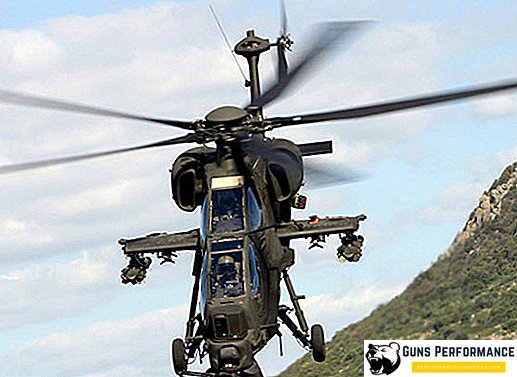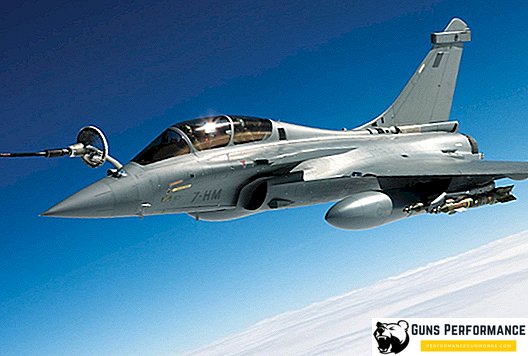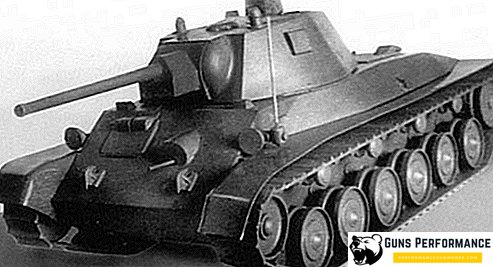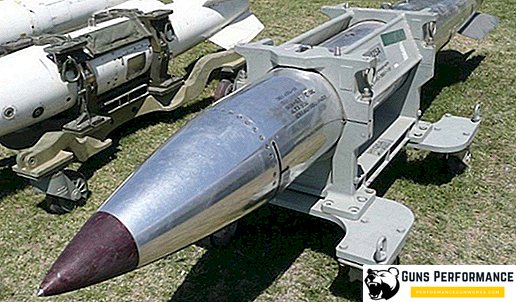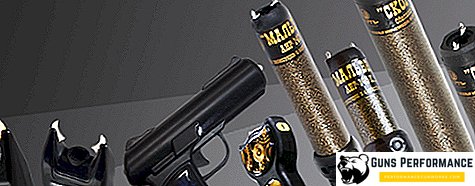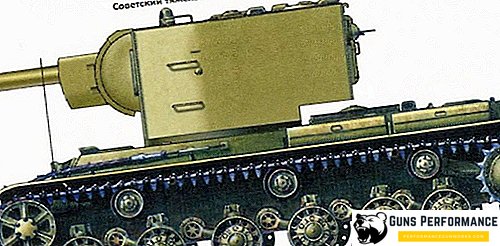The first months of the fighting on the Eastern Front showed a significant advantage of heavy Soviet KV and T-34 over German tanks and anti-tank artillery of the Wehrmacht. The German Pak 35/36 anti-tank gun could not effectively deal with Soviet combat vehicles equipped with anti-missile armor. Due to the low efficiency, the German soldiers called this gun a “beater” or a “cracker”, and German commanders later called the T-34 and Pak 35/36 confrontation a “dramatic chapter in the history of German infantry.”
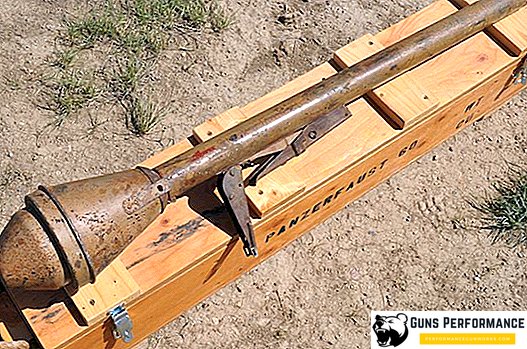
The Germans had 88-mm anti-aircraft guns, which they successfully used against the Soviet tanks, but it was not very convenient. These guns were bulky, expensive, there were few of them and they could not always cover the infantry from the onset of tanks. The Germans tried to solve the problem using special ammunition, sabot and cumulative shells, but this only partially resolved the issue. The worst thing was different: in close combat with enemy tanks, the German soldiers remained virtually unarmed, since it was very difficult to destroy a formidable fighting machine with a grenade.
It was necessary to seek a different solution, and the German designers found it: in early 1943, the first 500 Faustpatrons came into service with the Wehrmacht. This weapon was simple and cheap, but at the same time it was highly efficient. His work was based on the dynamo principle. During the war years, the German industry manufactured 8,254,300 units of various modifications of these weapons.

The history of the creation of Faustpatron
Faustpatron (Panzerfaust or Faustpatrone) was developed by HASAG (Hugo Schneider AG) under the direction of Dr. Heinrich Langweiler. He was faced with the task of creating a simple and effective means of dealing with enemy tanks at short distances. It is believed that the creation of the Germans Panzerfaust inspired familiarity with the American bazooka.
However, there are significant differences between the bazooka and Faustpatrone: the bazooka is, in fact, a portable rocket launcher, the Faustpatron looks more like a recoilless weapon. The Panzerfaust grenade launcher was designed in such a way that any infantryman could use it after a short briefing. The American bazooka had a constant and well-trained calculation.
During the war, the Wehrmacht received several modifications Panzerfaust, "Faustpatron" - rather, the collective name of all types of these weapons.

The first Faustpatron had no sight, its pointed front part often ricocheted from tank armor, and the weight of the explosive in the warhead was insufficient. The manufacturer took into account these shortcomings, and very quickly in the armed forces of the Wehrmacht was adopted an upgraded version of the weapon - Panzerfaust. In this modification, the size and weight of the head part of the grenade was increased, its front part was made in the form of a flat platform, the weight of the explosive increased. All this led to an increase in armor penetration weapons.

"Faustpatron" got exactly the classic look, familiar to us from military films and turned into a simple and deadly weapon, leaving virtually no chance to any tank.
A distinctive feature of Panzerfaust was its ease of manufacture and low cost.

With a grenade mass of 3.25 kg, the Faustpatron could penetrate the armor of any Soviet tank. The following figures indicate the effectiveness of this weapon: from January to April 1944, the Germans destroyed over 250 Soviet tanks with the help of Faustpatron.
This weapon had a great resource for further modernization than the developers took advantage of already in early 1944. Changes that have been made to Faustpatron, touched almost all the characteristics of these weapons. The new modification was called the Panzerfaust 60. The range of the aimed fire increased to 60 meters, the fighting qualities of the weapon improved, and its production was simplified. Major changes:
- Increasing the caliber of the launch tube to 50 mm, as well as increasing the thickness of its walls. This made it possible to increase the weight of the powder in the propellant charge, thereby increasing the speed and range of the grenade.
- The grenade was connected to the stem thanks to a special latch, and not a thread, which simplified the loading process and made it possible to install the front sight.
- The impact mechanism of the button type has been replaced by a simpler and reliable lever type. It was replaced primer igniter.
- Panzerfaust 60 received more perfect sight.
- The mass of upgraded weapons has increased to 6.25 kg.

The use of the Faustpatrons in the vast territories of the USSR was less effective than in densely populated Eastern Europe due to the short range of the grenade launcher. German industry rapidly increased the production of Panzerfaust: if in April 1944 the Wehrmacht received 100 thousand units of these weapons, in November of the same year this figure was 1.084 million units. It is for these reasons that most tanks were shot down with the help of Faustpatrons at the final stage of the war. At the end of the war, Panzerfaust became the main anti-tank weapon of the Wehrmacht, the SS forces and the people's militia units. German troops on the front line had several units of such weapons per fighter, which significantly strengthened the anti-tank defenses and increased the losses of Soviet tanks.
The need for these weapons in the army was so great that the military, on their own initiative, set up a collection of Faustpatron launch single-use pipes for sending them to factories for secondary equipment.
However, Soviet soldiers also accumulated experience in dealing with grenade throwers. Each tank was defended by a whole group of infantrymen, 100-200 meters away from it.

German designers continued to work on improving the grenade launcher. At the end of 1944, a new modification of Panzerfaust appeared, which could fire a hundred meters. In addition, the armor-piercing ability of the new grenade launcher and the accuracy of its firing increased. The Panzerfaust-100 became a really formidable opponent for any Allied tank, including the heaviest vehicles.
To reduce the number of losses from the new German weapons, Soviet tankers screened their cars, changed tactics, tried to avoid close combat.
At the very end of the war, the Teutonic gloomy genius "issued to the surface" another model Panzerfaust, which had a firing range of up to 150 meters and could be used several times. To increase the firing range improved aerodynamic characteristics of the grenade, changing its shape and reducing the diameter. Stabilizers and special grooves ensured a steady grenade flight. The maximum flight range was 300 meters, and the effective range - 150 meters. It was possible to wear a steel shirt with a notch on the body of the grenade, which, when undermined, yielded a large number of fragments. So the new grenade launcher became effective not only against enemy tanks, but also against its manpower.

However, HASAG managed to release only 500 copies of the new grenade launcher, and in April, Leipzig was captured by the Americans. The Germans were working on the creation of "Faustpatron" with a target range of 250 meters, which is very reminiscent of modern grenade launchers, but they could not translate these plans, Germany capitulated.
"Faustpatrony" inflicted enormous damage to the Soviet troops during the battle for Berlin: in total, more than 800 Soviet tanks and self-propelled guns were destroyed in this battle, most of which were hit by rocket launchers.
Faustpatron can be called one of the most effective weapons of the German army. In terms of price and efficiency, he was not equal. Having created Panzerfaust, the Germans practically opened a new direction in the arms business.

Panzerfaust Description
"Faustpatron" - this is a one-time anti-tank grenade launcher, which used the same principle of operation as recoilless guns. His device was very simple. The grenade did not have its own jet engine, the propellant charge was placed in the launch tube of the weapon and fired the grenade. After its ignition, the powder gases pushed the grenade forward and pulled back from the barrel, compensating for the recoil.
The trigger and sights were mounted on the launch tube. In later versions, the garnet's faustupron received four folding stabilizers. The charge of the grenade consisted of a mixture of tola and hexogen.
Sights consisted of a flap and the edge of the shell grenades. In the stowed position, the sighting bar was attached to the grenade's ear with a check and blocked the trigger.

The top of the aiming bar and the front sight was painted with luminescent paint for the convenience of aiming at night.
To make a shot, a grenade launcher was placed under the arm, aimed, and pressed the trigger. The shooter must be careful, as the jet of powder gases from the back of the weapon reached 4 meters and could, reflecting from any obstacles, contusion the shooter. Therefore, from Panzerfaust it was impossible to shoot from closed premises.
After the shot, a grenade fuse cocked; it worked when it met any obstacle.

Tactical and technical characteristics of Faustprona
| Option | Weight, kg | Head caliber, mm | Effective range, m | Penetration, mm |
| Faustpatrone-30 | 2,7-3,2 | 100 | 30 | 140 |
| Panzerfaust-30 | 6,9 | 149 | 30 | 200 |
| Panzerfaust-60 | 8,5 | 149 | 60 | 200 |
| Panzerfaust-100 | 9,4 | 149 | 100 | 200 |
| Panzerfaust-150 | 6,5 | 106 | 150 | 280-320 |


